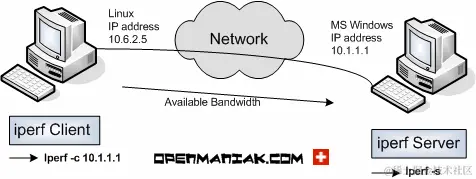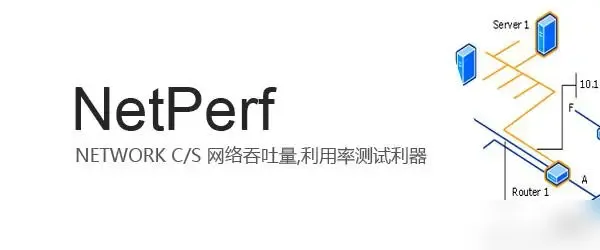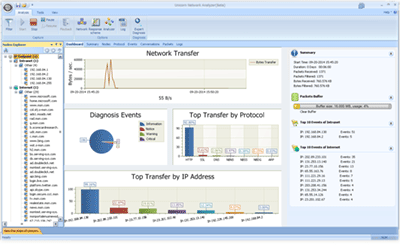Introduction
Recently, Juejin sent out an invitation for technical topics, and I followed the trend by writing an article about performance optimization and evaluation of network protocols. This article mainly discusses three major directions: performance metrics of network protocols, performance optimization strategies, and performance evaluation methods; with an in-depth analysis of these three aspects, aiming to share and exchange ideas with everyone.
3. Performance Evaluation Methods
Tools and Techniques
Network performance evaluation usually employs various tools such as Wireshark, Ping, and Iperf, which can help analyze network traffic, measure latency, and throughput.

- Wireshark: Wireshark is a highly popular network packet analysis software, capable of capturing various network data packets and displaying detailed packet information. For security reasons, Wireshark can only view packets but cannot modify packet content or send packets. It can capture both HTTP and HTTPS but cannot decrypt HTTPS, so Wireshark cannot interpret the contents of HTTPS. Main features are as follows:
1. Supports examination of hundreds of protocols and continues to add support for more;
2. Real-time capture and offline analysis;
3. Standard three-pane packet browser;
4. Cross-platform support including Windows, Linux, macOS, etc.;
5. Capture data can be browsed via GUI or TTY mode;
6. The most powerful display filters;
7. Rich VoIP analysis;
8. Supports read/write of many different capture file formats like tcpdump(libpcap), Microsoft Network Monitor, Pcap NG, and more;
9. Captured files that use gzip compression can be instantly decompressed;
10. Realtime data can be read from Ethernet, IEEE 802.11, Bluetooth, USB, Token Ring, Frame Relay, FDDI, and more;
11. Decryption support for many protocols, including IPsec, SSL/TLS, WEP, etc.;
12. Coloring rules can be applied to the packet list for quick and intuitive analysis;
13. Output can be exported as XML, CSV, or plain text. Iperf: Iperf is a network performance testing tool. Iperf can test maximum TCP and UDP bandwidth performance, has many parameters and UDP attributes that can be adjusted as needed, and can report bandwidth, latency jitter, and packet loss.
TCP Test
Server execution: ./iperf -s -i 1 -w 1M (Linux specified; if iperf -s for Windows). Default packet size is 8kbyte/s
Client execution: ./iperf -c host -i 1 -w 1M
‘-w’ represents TCP window size, replace 'host' with the server's address.
UDP Test
Server execution: ./iperf -u -s
Client execution: ./iperf -u -c 10.255.255.251 -b 900M -i 1 -w 1M -t 60
‘-b’ indicates bandwidth usage, 900M can be used on a 1G line for testing.
- Netperf: Netperf is a network performance measurement tool primarily aimed at TCP or UDP-based transmissions. Netperf testing can be conducted in different modes depending on the application, namely bulk data transfer mode and request/response mode. Netperf test results reflect how fast one system can send data to another and how quickly the other can receive it. Test design and execution

Summary: The design of performance testing should consider the purpose of the test, the test environment, and the expected results. Effective tests should cover various network conditions and scenarios.
Result Analysis
The performance evaluation results of network protocols can be analyzed from the following aspects:
- Protocol Efficiency: Analyzing the data transfer efficiency of network protocols, including transfer speed, bandwidth utilization, and latency. If protocol efficiency is low, it may result in slow network transfer speeds, bandwidth wastage, or high latency issues.
- Protocol Reliability: Assessing the reliability of the network protocol, including metrics like packet delivery success rate and packet loss rate. Poor reliability can lead to data transmission errors or loss.
- Protocol Security: Analyzing the security of the network protocol, including whether the security mechanisms such as data encryption and identity verification are complete. Insufficient protocol security may lead to data leakage or identity impersonation issues.
- Network Environment Adaptability: Evaluating the adaptability of network protocols in different network environments, including performance under various network types, bandwidth, and latency conditions. Poor adaptability can cause performance instability or malfunction in different network settings.
Here are my optimization recommendations:
- Optimize Protocol Algorithms: Enhance protocol efficiency and reliability by optimizing protocol algorithms. Choose more efficient protocol algorithms or optimize packet structures and transmission order for specific application scenarios.
- Enhance Protocol Security: Improve the security mechanisms of protocols to enhance transmission security. Consider adopting encryption technologies to protect data privacy and use digital signatures to verify data sources.
- Adapt to Different Network Environments: Improve the network environment adaptability of protocols to ensure stable operation in various network settings. Dynamic transmission rate adjustments or adaptive data packet size modifications can help adapt to varying bandwidth and latency conditions.
- Combine Multiple Optimization Approaches: Use a combination of optimization approaches, including protocol improvements, network environment adjustments, and hardware upgrades, to enhance network protocol performance.
However, it should be noted that performance evaluation and optimization of network protocols is a complex process requiring consideration of multiple factors. In practical operations, it’s advisable to consult professional technical personnel or teams for comprehensive analysis and optimization.
4. Case Study
An actual case is the network optimization of a large data center. By utilizing efficient load balancing and advanced routing algorithms, the data center can effectively handle large volumes of network traffic while maintaining low latency and high throughput.
A video streaming platform needs to assess the performance of current network protocols to determine whether changing or optimizing protocols is necessary to improve the user viewing experience. Key evaluation metrics include transfer speed, latency, and packet loss rate.
Evaluation Process:
- Setup Test Environment: Construct a test environment between the streaming platform’s servers and clients, including network bandwidth, network devices, and terminal devices.
- Prepare Data Collection Tools: Utilize Wireshark and iperf for data packet capture and analysis, while logging network bandwidth, latency, and other metrics.
- Prepare for Testing: Prepare test data, including video files of various types and sizes, to ensure a comprehensive assessment.
- Testing Process: Use current and alternate network protocols for video streaming, recording metrics such as transfer speed, latency, and packet loss rate.
- Data Processing and Analysis: Use statistical and analytical software to process the test data, deriving average, maximum, and minimum values of each metric.
Results Analysis:
- Transfer Speed: Comparing transfer speeds of different protocols, the current protocol’s speed was found to be insufficient for real-time video streaming.
- Latency: Analysis of different protocols’ latency showed high latency in the current protocol, affecting user experience.
- Packet Loss Rate: Compared packet loss rates of different protocols, revealing a high rate in the current protocol, potentially degrading video quality.
Optimization Recommendations:
- Change Protocols: Considering the poor performance of the current protocol, switch to more efficient and reliable protocols like HLS or DASH.
- Optimize Network Environment: Adjust network equipment settings and topology to reduce transmission latency and packet loss rate.
- Add Retransmission Mechanism: Implement a retransmission mechanism on the client side to mitigate packet loss issues, enhancing video transmission reliability.
- QoS Assurance: Employ QoS mechanisms on the streaming platform server to ensure the priority and stability of video transmission.
Conclusion: After implementing the optimization recommendations, conduct another performance evaluation to verify if the optimization meets the expected goals. The comparison of transfer speed, latency, and packet loss rate before and after protocol changes showed significant performance improvements with the new protocol, enhancing user experience substantially. Additionally, optimizing the network environment and adding a retransmission mechanism further improved video transmission performance.
5. Future Trends

With the development of technology, such as the rise of 5G and the Internet of Things (IoT), network protocol performance optimization and evaluation face new challenges. The high data transfer rates of 5G and the extensive connectivity demands of IoT require network protocols to adapt to more complex and diverse communication environments.
Future development trends in network protocol performance:
- Efficiency: As network technology evolves, demands for network protocol performance are increasing. Future protocols will be more efficient, better meeting the needs of various application scenarios.
- Security: Security is a crucial aspect of network protocol performance. Future protocols will place greater emphasis on security, adopting more secure encryption algorithms and protocol designs to protect user data and privacy.
- Adaptability: Future protocols will be more adaptable to different network environments and application scenarios. For IoT, cloud computing, and big data applications, protocols will be further optimized and customized to meet diverse needs.
- Scalability: Ensuring scalability will be key for future protocols, allowing for adaptation and extension in ever-changing network environments to ensure long-term stability and usability.
- Energy Efficiency: With the proliferation of IoT and mobile devices, energy efficiency becomes increasingly important. Future protocols will focus more on energy-efficient designs to reduce device power consumption and extend battery life.
Summary: Future developments in network protocol performance will focus more on efficiency, security, adaptability, scalability, and energy efficiency, meeting the ever-changing and growing demands of network applications.



